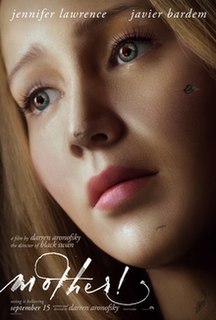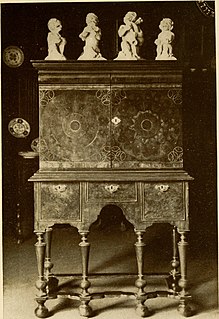Related Research Articles

A maze is a path or collection of paths, typically from an entrance to a goal. The word is used to refer both to branching tour puzzles through which the solver must find a route, and to simpler non-branching ("unicursal") patterns that lead unambiguously through a convoluted layout to a goal. The pathways and walls in a maze are typically fixed, but puzzles in which the walls and paths can change during the game are also categorised as mazes or tour puzzles.
A puzzle is a game, problem, or toy that tests a person's ingenuity or knowledge. In a puzzle, the solver is expected to put pieces together in a logical way, in order to arrive at the correct or fun solution of the puzzle. There are different genres of puzzles, such as crossword puzzles, word-search puzzles, number puzzles, relational puzzles, and logic puzzles.

Joinery is a part of woodworking that involves joining together pieces of wood or lumber, to produce more complex items. Some wood joints employ fasteners, bindings, or adhesives, while others use only wood elements. The characteristics of wooden joints - strength, flexibility, toughness, appearance, etc. - derive from the properties of the materials involved and the purpose of the joint. Therefore, different joinery techniques are used to meet differing requirements. For example, the joinery used to construct a house can be different from that used to make puzzle toys, although some concepts overlap. In British English usage it is distinguished from carpentry which relates to structural timber work.

Darren Aronofsky is an American film director, producer, and screenwriter. His films are noted for their surreal, melodramatic, and often disturbing elements, often based in psychological horror and drama.

A dovetail joint or simply dovetail is a joinery technique most commonly used in woodworking joinery (carpentry), including furniture, cabinets, log buildings, and traditional timber framing. Noted for its resistance to being pulled apart, the dovetail joint is commonly used to join the sides of a drawer to the front. A series of 'pins' cut to extend from the end of one board interlock with a series of 'tails' cut into the end of another board. The pins and tails have a trapezoidal shape. Once glued, a wooden dovetail joint requires no mechanical fasteners.

A commode is any of many pieces of furniture. The Oxford English Dictionary has multiple meanings of "commode". The first relevant definition reads: "A piece of furniture with drawers and shelves; in the bedroom, a sort of elaborate chest of drawers ; in the drawing room, a large kind of chiffonier." The drawing room is itself a term for a formal reception room, and a chiffonier is, in this sense, a small sideboard dating from the early 19th century.

Nobuyuki Yoshigahara was perhaps Japan's most celebrated inventor, collector, solver, and communicator of puzzles.

A puzzle box is a box that can only be opened by solving a puzzle. Some require only a simple move and others a series of discoveries.
Eric Harshbarger is an Alabama-based builder of large-scale Lego brick mosaics and sculptures. From around 2000 to 2006 he was commissioned to build for television shows and magazines for promotional purposes.

Daniel Pabst was a German-born American cabinetmaker of the Victorian Era. He is credited with some of the most extraordinary custom interiors and hand-crafted furniture in the United States. Sometimes working in collaboration with architect Frank Furness (1839–1912), he made pieces in the Renaissance Revival, Neo-Grec, Modern Gothic, and Colonial Revival styles. Examples of his work are in the collections of the Metropolitan Museum of Art, the Philadelphia Museum of Art, the Art Institute of Chicago, and the Victoria and Albert Museum in London.
Stewart Coffin is an American puzzle maker. According to Ars Technica, he is considered to be one of the "best designers of polyhedral interlocking puzzles in the world."

A cabinet is a box-shaped piece of furniture with doors and/or drawers for storing miscellaneous items. Some cabinets stand alone while others are built in to a wall or are attached to it like a medicine cabinet. Cabinets are typically made of wood, coated steel, or synthetic materials. Commercial grade cabinets, which differ in the materials used, are called casework, casegoods, or case furniture.

Mother! is a 2017 American psychological horror film written and directed by Darren Aronofsky, and starring Jennifer Lawrence, Javier Bardem, Ed Harris, and Michelle Pfeiffer. The plot follows a young woman whose tranquil life with her husband at their country home is disrupted by the arrival of a mysterious couple.

The Hoover desk is a large block front desk, designed by J. Stuart Clingman and built by the Robert W. Irwin Company, used by Presidents Herbert Hoover and Franklin D. Roosevelt in the Oval Office as their Oval Office desk. Created in 1930 as a part of a 17-piece office suite by furniture makers from Grand Rapids, Michigan, it was given to the White House by the Grand Rapids Furniture Manufacturers Association. The Hoover desk is one of only six desks to be used by a President in the Oval Office.

What later came to be known as the William and Mary style is a furniture design common from 1700 to 1725 in the Netherlands, the Kingdom of England, the Kingdom of Scotland, and later, in England's American colonies. It was a transitional style between Mannerist furniture and Queen Anne furniture. Sturdy, emphasizing both straight lines and curves, and featuring elaborate carving and woodturning, the style was one of the first to imitate Asian design elements such as japanning.

The furniture of the Louis XV period (1715-1774) is characterized by curved forms, lightness, comfort and asymmetry; it replaced the more formal, boxlike and massive furniture of the Style Louis XIV. It employed marquetry, using inlays of exotic woods of different colors, as well as ivory and mother of pearl.

The Metropolitan Museum of Art has on display a complete studio from the Palazzo ducale di Gubbio. Consisting of period woodwork from late 15th century Italy, the studio was commissioned for Federico da Montefeltro.

Nob Yoshigahara Puzzle Design Competition – is an annual award and competition in the engineering and design of mechanical puzzles. The location of the competition rotates between North America, Europe, and Japan. It was founded in 2001, and has been known since 2005 as the Nob Yoshigahara Puzzle Design Competition, after the renowned puzzler Nob Yoshigahara.
References
- ↑ "Friends of KCG" . Retrieved June 1, 2017.
- ↑ Arvidson, Anna. "Thinking Outside of the Box: Local Artist Kagen Sound" . Retrieved June 1, 2017.
- ↑ Brasch, Sam (April 22, 2016). "Meet Denver's Master Puzzle Box Maker" . Retrieved June 1, 2017.
- ↑ "Kagen Sounds" . Retrieved June 1, 2017.
- 1 2 3 4 5 6 Perry-Smith, E. "Boxed In". 5280 Magazine (July 2011).
- ↑ Friend, T. "Heavy Weather: Darren Aronofsky gets Biblical". The New Yorker (March 17, 2014).
- ↑ Friend, Tad (2014-03-10). "Heavy Weather". The New Yorker. ISSN 0028-792X . Retrieved 2018-01-15.
- ↑ Sound, Kagen (2011). "The Pipe Organ Desk" . Retrieved June 1, 2017.
- ↑ Voulgaridis, V.; Vassiliou, V. G. (2005). "The walnut wood and its utilization to high value products". Acta Hortic. 705: 69–81. doi:10.17660/ActaHortic.2005.705.7.
- ↑ Scott, S. (March 22, 2012). "A Woodworker's Musical Masterpiece". Fine Woodworking.
- ↑ Sound, Kagen (2010). "Lotus Table (Prototype)" . Retrieved June 1, 2017.
- ↑ Sound, Kagen (2008). "The Lotus Table" . Retrieved June 1, 2017.
- ↑ Sound, Kagen (2011). "Lotus Box" . Retrieved June 1, 2017.
- 1 2 Sound, Kagen (December 18, 2016). "Gallery" . Retrieved June 1, 2017.
- 1 2 Puzzle Design Competition Committee (July 30, 2006). "2006 Puzzle Design Competition Results" . Retrieved June 1, 2017.
- ↑ Sound, Kagen. "About Kagen" . Retrieved June 1, 2017.
- ↑ Puzzle Design Competition Committee (2002). "IPP22 Competition Results" . Retrieved June 1, 2017.
- ↑ Puzzle Design Competition Committee (2003). "IPP23 Competition Results" . Retrieved June 1, 2017.
- ↑ Puzzle Design Competition Committee (2004). "IPP24 Competition Results" . Retrieved June 1, 2017.
- ↑ Association Awards: Sam Loyd Award Association for Games & Puzzles International